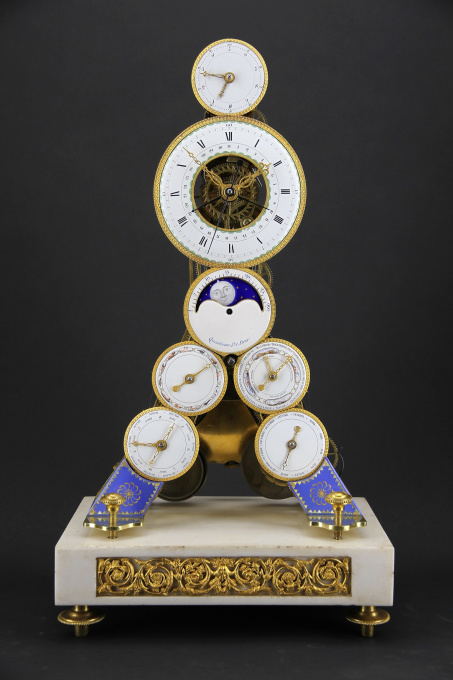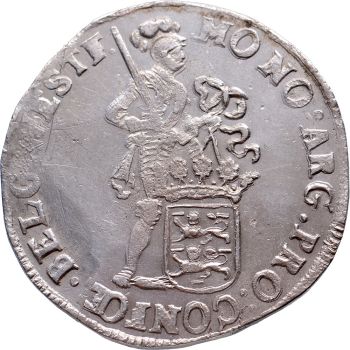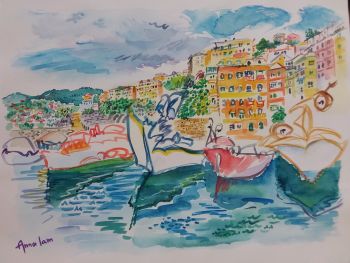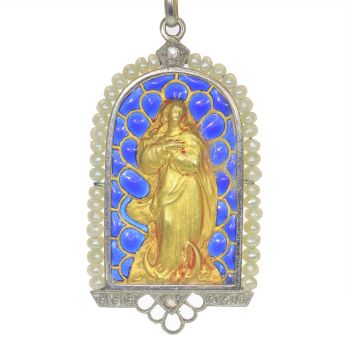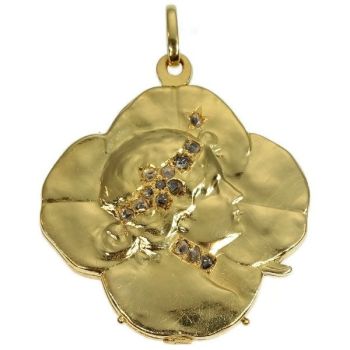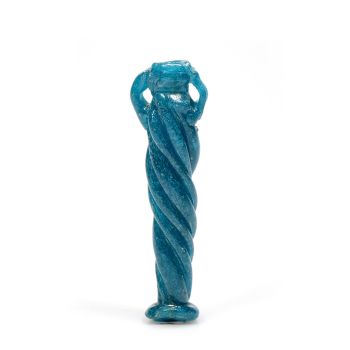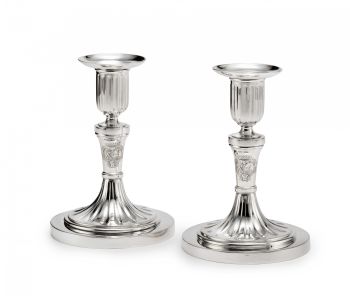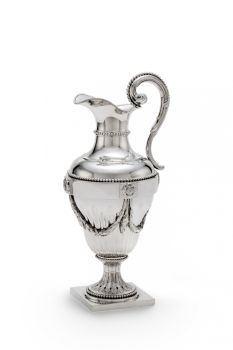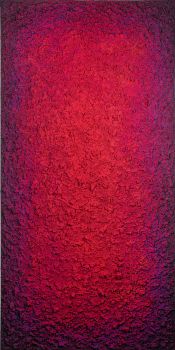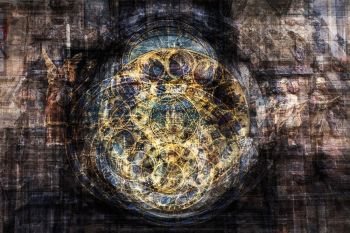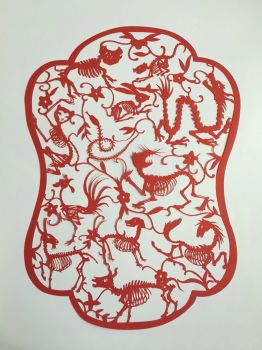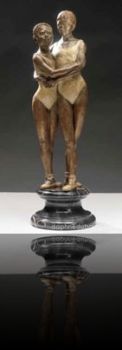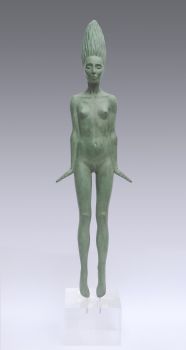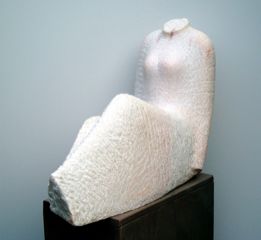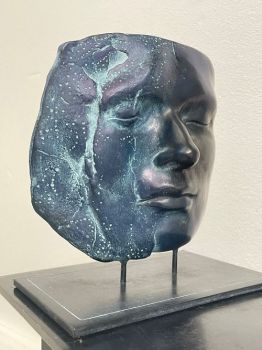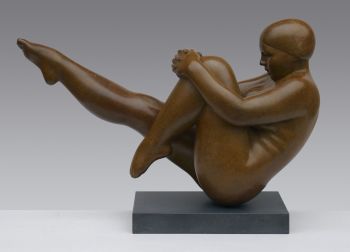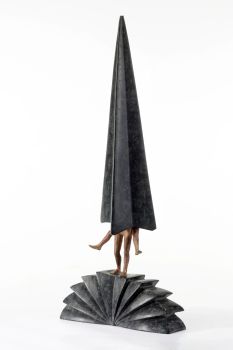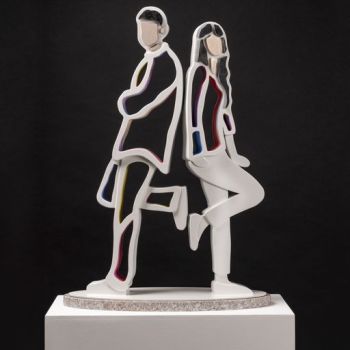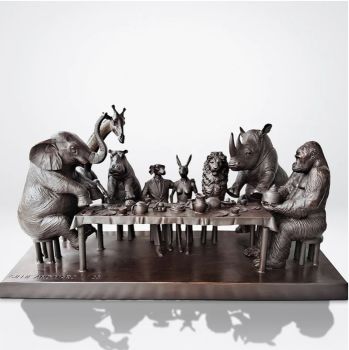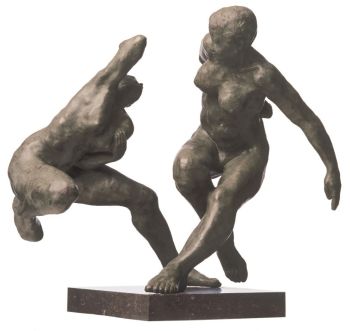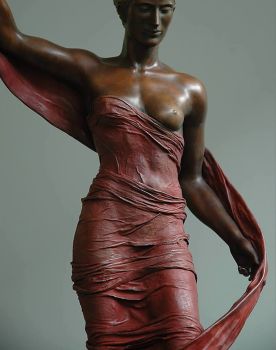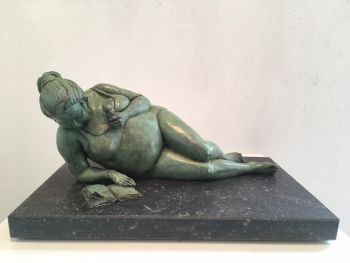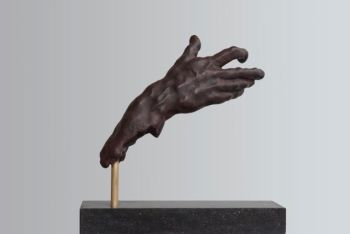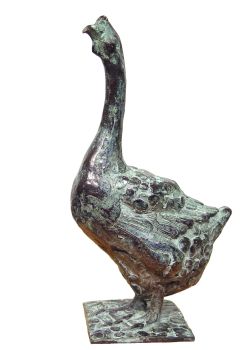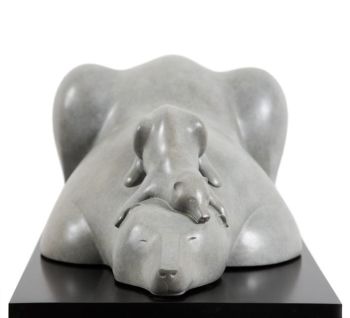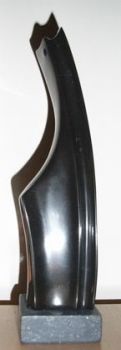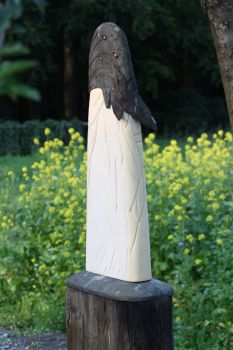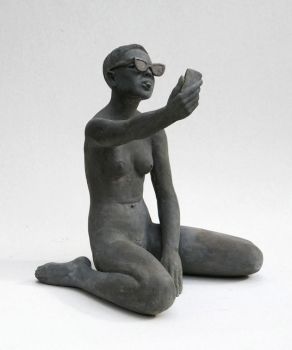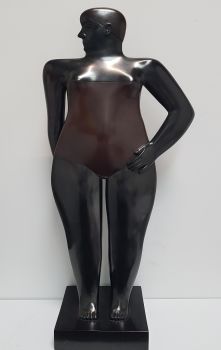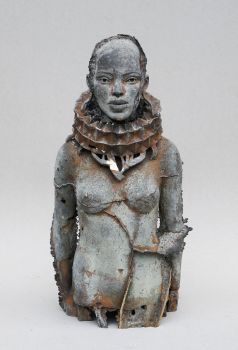French Revolutionary Skeleton Clock with Dual Time Display 1793
Unknown artist
MarbleStoneBronzeGoldMetalWhite marbleEnamelGilt
49 ⨯ 27 ⨯ 17 cm
Currently unavailable via Gallerease
- About the artworkA skeleton clock (pendule squelette) with 7 dials and 15 indications, signed: “Baudin”. The upper dial indicates the hour of the day in decimal time (10 hours per natural day). The large dial indicates duodecimal (conventional) time and two extra hands that respectively indicate the date in the Gregorian and the Republican calender. The lower central dial shows the phases of the moon calendar (Quantième De Lune) and the days in the moon calendar (29.5 days)
Beneath the three central dials, there are four more dials that respectively indicate:
Upper left: Zodiac with the respective constellations
Lower left: the outer ring indicates the day of the Republican décade, the inner ring indicates the day of the Gregorian week and its corresponding planet.
Upper right: the months and seasons of the Republican calender
Lower right: the months of the Gregorian calender.
The clockwork has a going train with pin wheel escapement and central seconds indication. The half-second grid pendulum has spring suspension. To level the mechanism there are set screws in each of the four legs.
The striking train for the quarter hours is located in the left leg and strikes on two bells (b1 & b2) In the right leg there is a striking train for the hours (b3).
The quarter hour striking train strikes once at 15 minutes (b1), twice at 30 minutes (b1-b2) and three times at 45 minutes (b1-b2-b1). At the hour it strikes 4 times (b1-b2-b1-b2) and subsequently the hour at b3
The left striking train drives the hands of the two lower left dials, the right striking train drives the hands of the right dials. The left winding mechanism is wound clockwise, the right mechanism is wound counter clockwise. The windlasses of the respective springs are hidden behind the blue enamelled cover plates. The date and moondate are driven by the going train.
The Revolutionary calender
The calender had 12 months of equally 30 days. The months were divided into three periods or décades of ten days. Every year starts on the autumnal equinox (when the sun is exactly of the equator). The days left to make a full year after the twelve months, were called jours supplémentaires or sanculotides. These were the day of virtue, the day of genius, the day of labour, the day of opinion, and the day of recompense. In leap years (les années sextiles) the day of the revolution was added to this range. The period of four years that ended with the day of the revolution was called a Franciade.
The poet Fabré d’Églantine was commissioned to devise new names for the months and days. months of the fall; vendémiaire, brûmaire, frimaire; months of winter; nivôse, pluviôse, nivôse; months of spring; germinal, floreal, priairial; months of summer; messidor, thermidor, fructidor.
The days of the décades were called: primedi, duodi, tridi, quartidi, quintidi, sextidi, septidi, octidi, nonidi, and décadi. Every day of the year also got its own name to replace the Catholic saints days. It was decided that days were given names of fruits, vegetables, animals, tools etcetera. The quintidis should get the name of an animal, the décadis were to be given the name of agricultural implements. - About the artist
It might happen that an artist or maker is unknown.
Some works are not to be determined by whom it is made or it is made by (a group of) craftsmen. Examples are statues from the Ancient Time, furniture, mirroirs, or signatures that are not clear or readible but as well some works are not signed at all.
As well you can find the following description:
•“Attributed to ….” In their opinion probably a work by the artist, at least in part
•“Studio of ….” or “Workshop of” In their opinion a work executed in the studio or workshop of the artist, possibly under his supervision
•“Circle of ….” In their opinion a work of the period of the artist showing his influence, closely associated with the artist but not necessarily his pupil
•“Style of ….” or “Follower of ….” In their opinion a work executed in the artist’s style but not necessarily by a pupil; may be contemporary or nearly contemporary
•“Manner of ….” In their opinion a work in the style of the artist but of a later date
•“After ….” In their opinion a copy (of any date) of a work of the artist
•“Signed…”, “Dated….” or “Inscribed” In their opinion the work has been signed/dated/inscribed by the artist. The addition of a question mark indicates an element of doubt
•"With signature ….”, “With date ….”, “With inscription….” or “Bears signature/date/inscription” in their opinion the signature/ date/ inscription has been added by someone other than the artist
Artwork details
Related artworks
- 1 - 4 / 12
Reynier de Haan
An elegant Louis XVI Dutch Silver Monteith Bowl 1778
Price on requestJacob J. Roosjen SRI
1 - 4 / 7Unknown artist
A RARE COMPLETE INDIAN SADELI INLAID WORK AND WRITING BOX1800 - 1850
Price on requestZebregs & Röell - Fine Art - Antiques
Unknown artist
A rare Japanese export lacquer medical instrument box1650 - 1700
Price on requestZebregs & Röell - Fine Art - Antiques
1 - 4 / 24- 1 - 4 / 7
- 1 - 4 / 24

